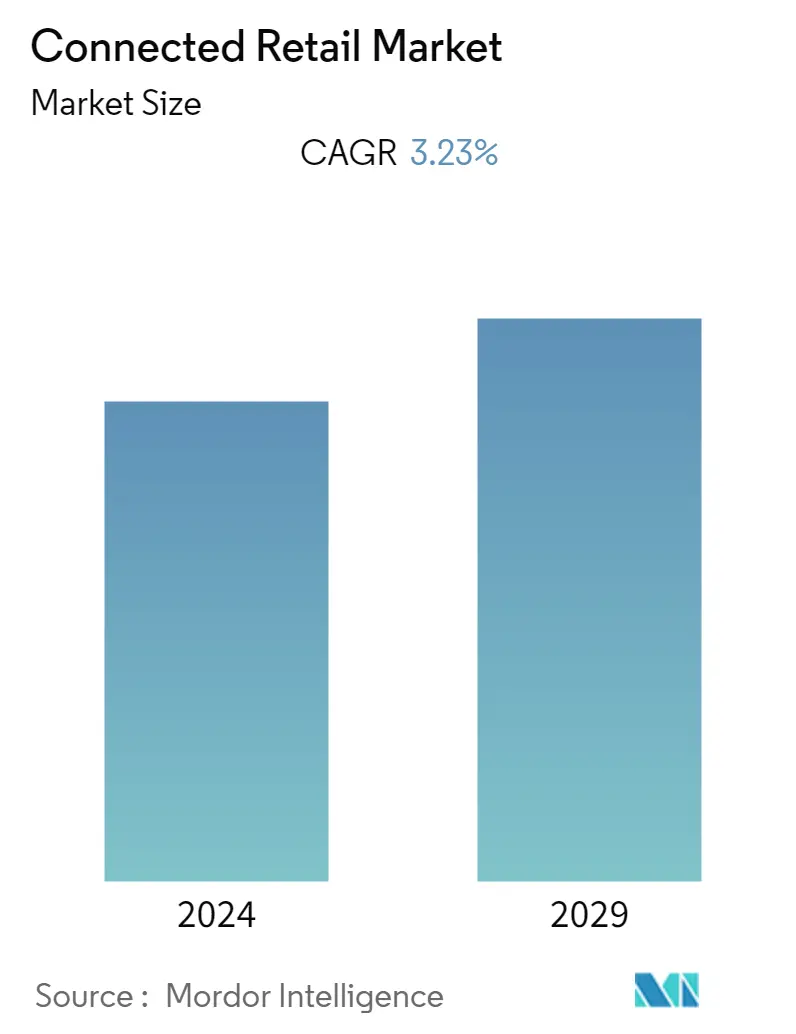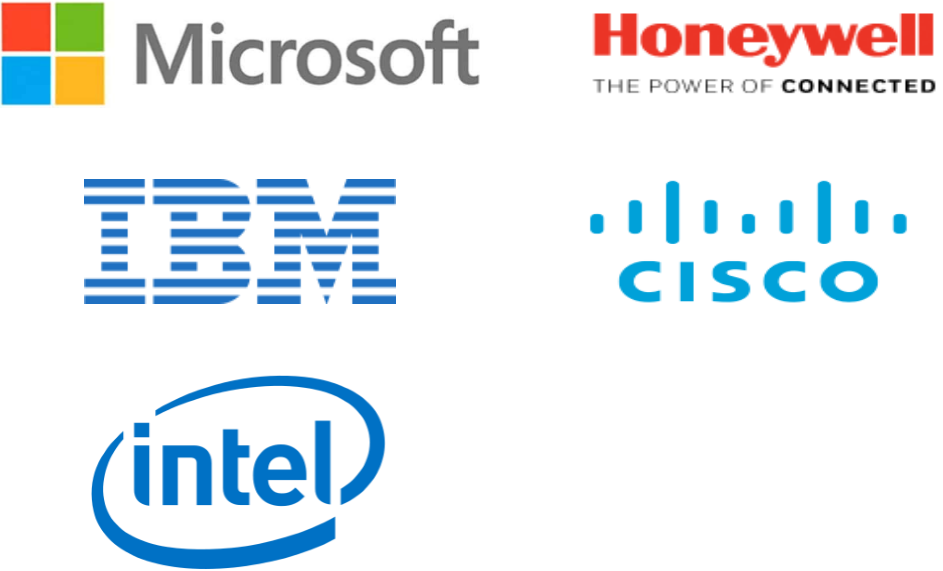Market Size of Connected Retail Industry

| Study Period | 2019 - 2029 |
| Base Year For Estimation | 2023 |
| CAGR | 3.23 % |
| Fastest Growing Market | Asia Pacific |
| Largest Market | North America |
| Market Concentration | Medium |
Major Players
*Disclaimer: Major Players sorted in no particular order |
Connected Retail Market Analysis
The connected retail market was valued at USD 27.84 billion in 2020 and is expected to reach USD 78.21 billion by 2026, registering a CAGR of 18.43% during the forecast period (2021 - 2026).
- The rapid growth of IoT devices is a major factor driving the market of connected devices. The connected retail market is highly dependent on IoT technology for its further growth. The rise of omnichannel retailing, where the consumers are on continuously connected platforms, like mobile, tablet, or desktop, has led to increasing prominence of connected retailing.
- With the improving industrial processes and automated manufacturing facilities, components costs have witnessed a declining trend. Reducing prices of components in a newly emerging market is a good opportunity for the growth of the connected retail market.
- Retailers across the globe are realizing the benefits of connecting with the customers and providing them a more immersive shopping experience by consistently providing them messages about pricing, product availability and provide customer service across all touch points, which are some of the factors driving the market further.
- However, the lack of fundamental IoT standards to control the data flow and improve the security and privacy of data is one of the factors restraining the growth of the market studied.
Connected Retail Industry Segmentation
Connected retail means to connect with the customers seamlessly through personalized marketing, the combination of a physical store and digital experience, supply chain, varied payment options and providing the capability to employees to collaborate more effectively.
| By Component | |
| Hardware | |
| Software | |
| Services |
| By Technology | |
| ZigBee | |
| NFC | |
| Bluetooth Low Energy | |
| Wi-Fi | |
| Other Technologies |
| Geography | |
| North America | |
| Europe | |
| Asia-Pacific | |
| Latin America | |
| Middle East & Africa |
Connected Retail Market Size Summary
The connected retail market is experiencing significant growth, driven by the proliferation of IoT devices and the rise of omnichannel retailing. This market is heavily reliant on IoT technology, which facilitates continuous consumer engagement across various platforms such as mobile, tablet, and desktop. Retailers are increasingly recognizing the benefits of connecting with customers to offer a more immersive shopping experience, which includes providing real-time information on pricing, product availability, and customer service across all touchpoints. However, the lack of standardized IoT protocols to manage data flow and ensure security and privacy poses challenges to market expansion.
North America is a key region for the connected retail market, largely due to its rapidly expanding IoT sector. The demand for connected solutions is growing as retailers seek to enhance consumer engagement, reduce operational costs, and optimize employee efficiency. Companies like Apple are leading the way by leveraging real-time information to enhance customer interactions. The trend of me-tailing, which focuses on personalized consumer experiences, is also contributing to market growth in this region. The competitive landscape is moderately concentrated, with major players such as Cisco Systems Inc., Microsoft Corporation, Intel Corporation, and IBM Corporation focusing on product and service innovation, as well as strategic mergers and acquisitions to strengthen their market positions.
Connected Retail Market Size - Table of Contents
-
1. MARKET DYNAMICS
-
1.1 Market Overview
-
1.2 Introduction to Market Drivers and Restraints
-
1.3 Market Drivers
-
1.3.1 Increased Adoption of IoT Devices
-
-
1.4 Market Restraints
-
1.4.1 Data Security and Privacy Concerns
-
-
1.5 Industry Attractiveness - Porter's Five Force Analysis
-
1.5.1 Threat of New Entrants
-
1.5.2 Bargaining Power of Buyers/Consumers
-
1.5.3 Bargaining Power of Suppliers
-
1.5.4 Threat of Substitute Products
-
1.5.5 Intensity of Competitive Rivalry
-
-
-
2. MARKET SEGMENTATION
-
2.1 By Component
-
2.1.1 Hardware
-
2.1.2 Software
-
2.1.3 Services
-
-
2.2 By Technology
-
2.2.1 ZigBee
-
2.2.2 NFC
-
2.2.3 Bluetooth Low Energy
-
2.2.4 Wi-Fi
-
2.2.5 Other Technologies
-
-
2.3 Geography
-
2.3.1 North America
-
2.3.2 Europe
-
2.3.3 Asia-Pacific
-
2.3.4 Latin America
-
2.3.5 Middle East & Africa
-
-
Connected Retail Market Size FAQs
What is the current Connected Retail Market size?
The Connected Retail Market is projected to register a CAGR of 3.23% during the forecast period (2024-2029)
Who are the key players in Connected Retail Market?
Cisco Systems Inc., Microsoft Corporation, Intel Corporation, IBM Corporation and Honeywell International Inc. are the major companies operating in the Connected Retail Market.

